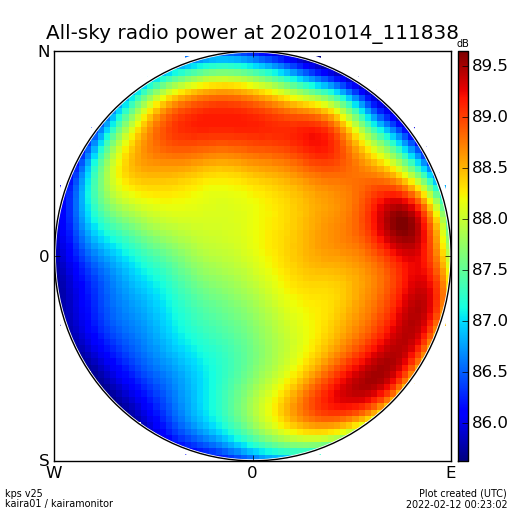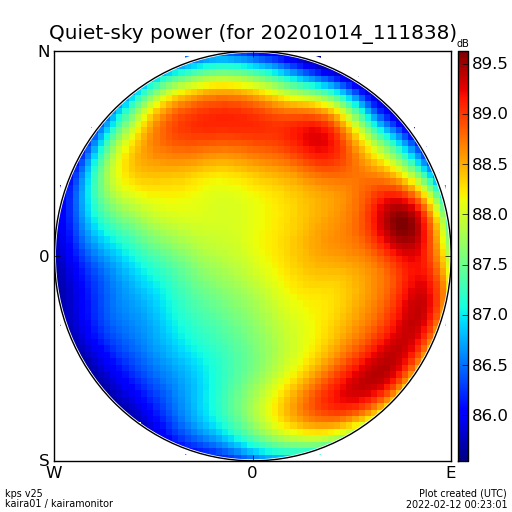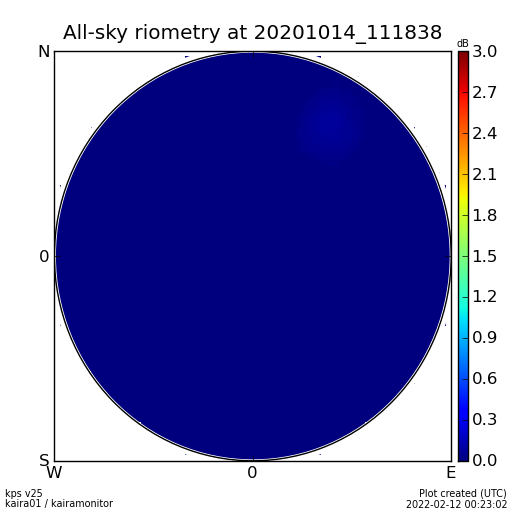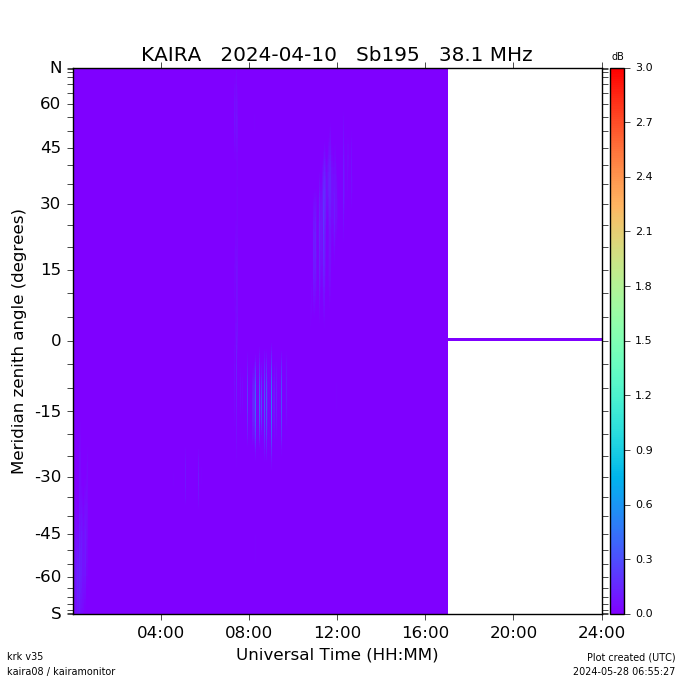Sodankylä Geophysical Observatory |
KAIRA SCIENCE : Overview | Data Policy | Reference | Acknowledgements | Schedule
Interferometric riometry
Riometry (rio = relative ionospheric opacity) is a measure of the absorption of radio waves at (typically) HF and VHF frequencies. Interferometry is the use of the correlation between signals received at multiple antennas to determine the direction of incoming radio waves. Together, these techniques can be used to map the location of radio absorption in the ionosphere. Interferometric riometry is one of the areas of research for the KAIRA facility.Real-time all-sky riometry
The following three images are the instantaneous all-sky power, the estimated quiet-sky power and the derived radio absorption. Units are decibels. The plots are updated approximately once per minute.
Riometric keograms
|
To the left is an interferometric riometry keogram. This shows the radio absorption on the KAIRA meridian, at a frequency of approx. 38.1 MHz. The plot is generated by the realtime monitoring system. It is updated approximately every four hours, as data are moved from the KAIRA site to Sodankylä and then processed to generate all-sky images and from there to determine the absorption. Quiet-sky power is also determined as part of this process. The keogram is generated on a different timescale to the real-time, all-sky images above. This means it is generated less often, but is more robust in its calibration and is displayed with higher resolution. |
The following are references for interferometric riometry (technique and science) carried out by KAIRA.
McKay, D., "KAIRA - The Kilpisjärvi Atmospheric Imaging Receiver Array", Avhandling, UiT - The Arctic University of Norway, Tromsø, Norway, 2018 https://hdl.handle.net/10037/13716 (UiT Munin archive).
McKay, D., R. Fallows, M. Norden, A. Aikio, J. Vierinen, F. Honary, S. Marple, and T. Ulich (2015), All-sky interferometric riometry, Radio Sci., 50, 1050-1061, doi:10.1002/2015RS005709. http://onlinelibrary.wiley.com/doi/10.1002/2015RS005709/full
McKay, D., Partamies, N., and Kauristie, K.: Acquisition of optical and riometric keograms for studying auroral electron precipitation, in: XVIII Geofysiikan Päivät, Geofysiikan seura r.y., 35-38, available at: https://geofysiikanseura.yhdistysavain.fi/@Bin/174016/GFP2017_kirja.pdf (last access: 13 January 2018), 2017.
McKay, D., Partamies, N., and Vierinen, J.: Pulsating aurora and cosmic noise absorption associated with growth-phase arcs, Ann. Geophys., 36, 59-69, https://doi.org/10.5194/angeo-36-59-2018, 2018. https://www.ann-geophys.net/36/59/2018/
See also:
- Real-time monitoring – up-to-date plots of KAIRA data products.
- KAIRA Data Sheet – technical details and parameters for the KAIRA system.






